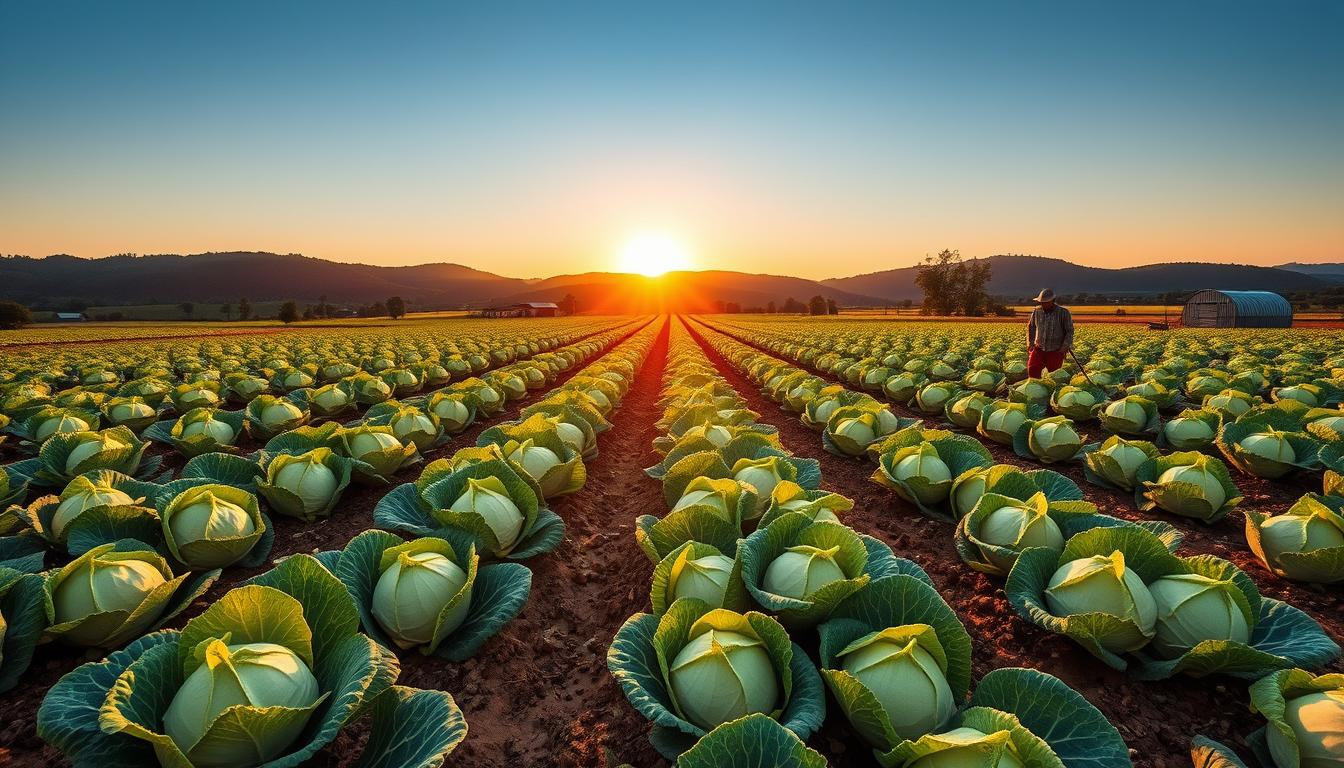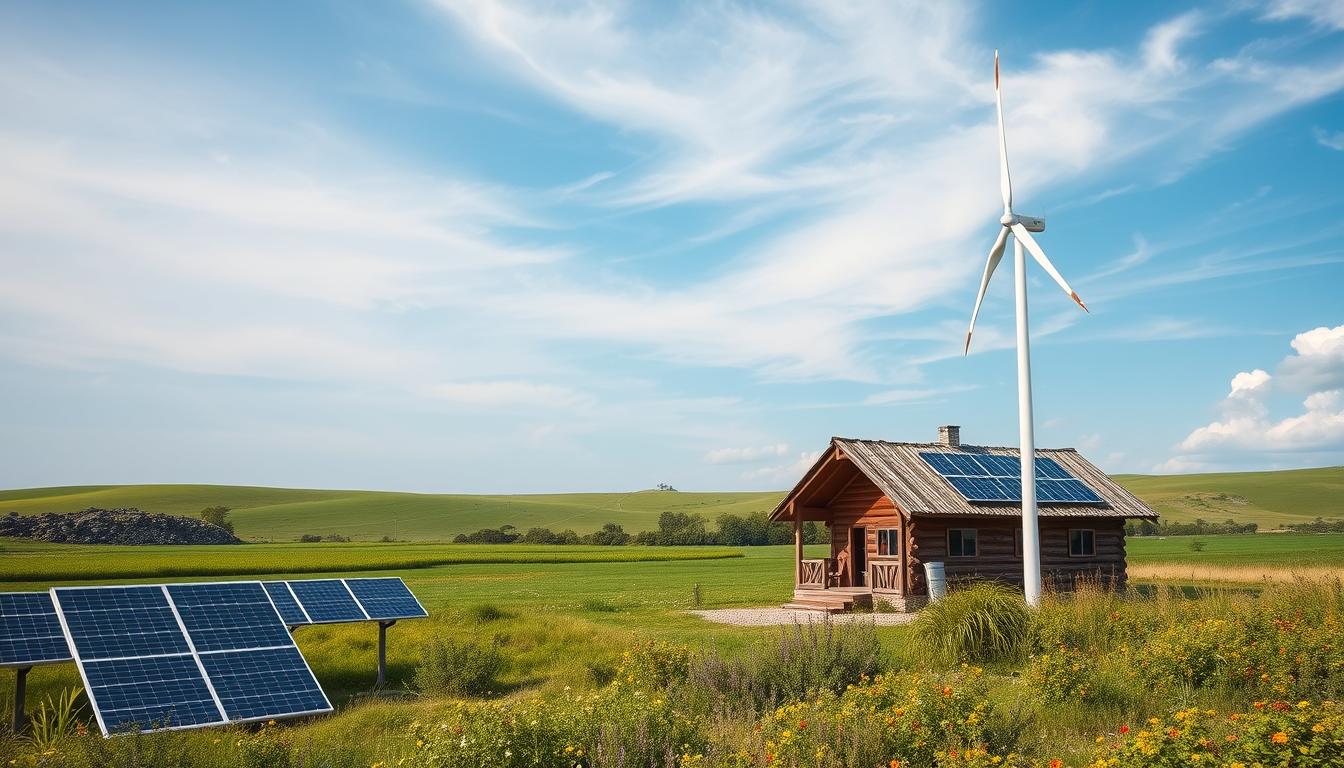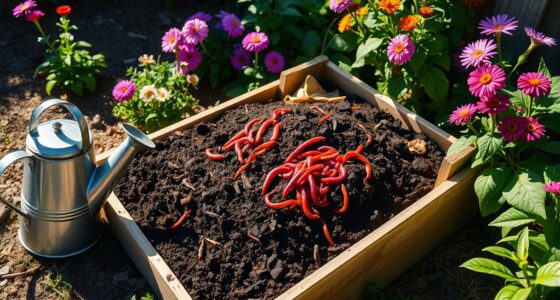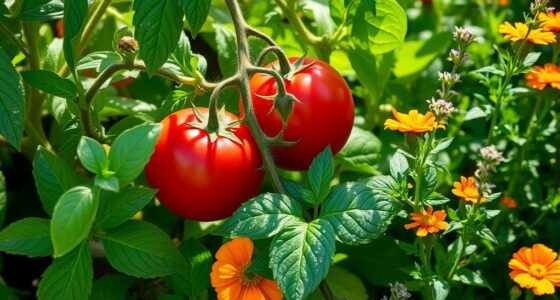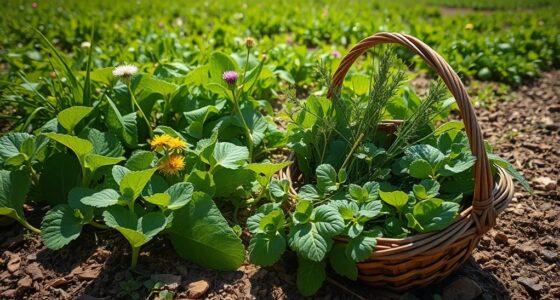Imagine walking through your garden, sun on your back. You see rows of lush, green cabbages, each a symbol of your hard work. This is what cabbage farming is about. It’s a journey that feeds both body and spirit. By following expert cabbage tips, you can grow more and better cabbages. This could feed both your family and even your community.
This article will show you how to improve your cabbage-growing skills. You’ll learn about the best growing conditions and how to keep pests away. With these tips, you’ll be ready to grow amazing cabbages with confidence!
Key Takeaways
- Cabbage varieties like ‘Caraflex’ can grow significantly in size, making them ideal for high yields.
- Proper spacing of seedlings is crucial, ensuring healthy growth and development.
- Understanding climate and soil preferences plays a vital role in successful cabbage farming.
- Companion planting can enhance your cabbage garden by repelling pests and improving soil quality.
- Regular watering and moisture management are key factors in producing sweet and crunchy cabbage.
The Benefits of Growing Cabbage
Cabbage is a nutritional champion in your garden. It’s packed with health benefits and offers many cooking options. Its many vitamins and minerals make it great for any diet. In the kitchen, cabbage’s versatility inspires creativity. Knowing its nutritional and culinary value helps you use this vegetable to the fullest.
Nutritional Value of Cabbage
Cabbage is full of nutrients that boost health. It is high in vitamin C, which helps your immune system and skin look healthy. Cabbage is also low in calories, making it good for weight management. It’s rich in fiber and antioxidants. These help with digestion and fight inflammation. When you grow cabbage yourself, you get the freshest, most flavorful produce.
Cabbage’s Versatility in the Kitchen
Think of all the dishes you can make with cabbage. You can make crunchy coleslaw, tangy sauerkraut, or fermented kimchi. Cabbage can be the main ingredient or add flavor to dishes. Homegrown cabbage tastes better than what you buy at the store. This means better-tasting dishes. You can use cabbage in many ways, from raw to fermented. This makes it easy to fit into any meal.
Ideal Growing Conditions for Cabbage
To grow cabbage well, knowing the right conditions is key. Cabbage needs specific climate and soil to thrive. Get these right, and you’ll have a great harvest.
Climate Requirements
Cabbage loves the cold. It does best when it’s under 80°F. Yet, it can handle down to 25°F. This makes early spring or late summer ideal for planting.
To get the best taste, let cabbage grow in cooler weather. Cold weather boosts its sweetness and crunch.
Soil Preferences
For cabbage, fertile, loamy soil is best. It should drain well but keep moisture. Aim for a pH of 6.5 to 6.8 to avoid disease.
Add organic compost to improve soil and growth. Keep the soil moist with 1-2 inches of water weekly.
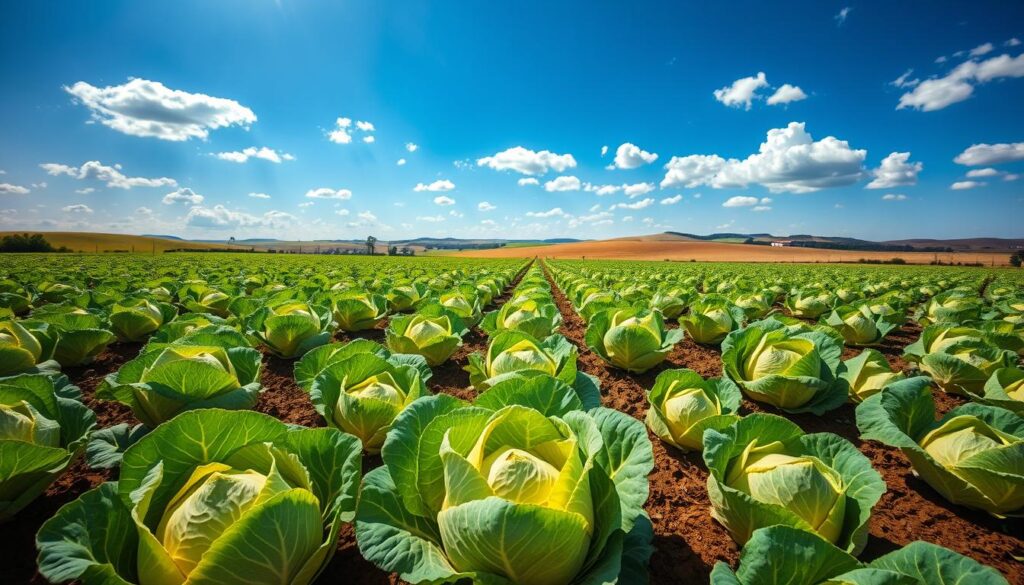
Best Cabbage Varieties for Successful Farming
Choosing the right cabbage variety can greatly improve your farming. Different types of cabbage are good for different things. This includes cooking and farming needs. It’s important to know about the various types of cabbage you can grow. This will help you make the best choices. Here’s a guide on top cabbage varieties and advice for selecting the best ones.
Popular Varieties for Different Uses
Some top cabbage varieties include:
- Green Cabbage: The most common type, perfect for coleslaw and salads.
- Red Cabbage: Known for its vibrant color, ideal for stir-fries and pickling.
- Savoy Cabbage: Features crinkled leaves that are great for steaming and soups.
- Napa Cabbage: A staple in Asian cuisine, perfect for stir-frying and salads.
These varieties suit different cooking needs. Whether you want to make sauerkraut or cabbage soup, there’s a variety for you.
Tips for Choosing the Right Variety
Consider these factors when picking a cabbage type:
- Local Climate: Check if your area suits early, mid, or late-season cabbages. Cabbages grow best in 45°F to 75°F.
- Growing Space: Give plants enough space to avoid crowding. Space rows 12 to 24 inches apart.
- Culinary Needs: Think about what you like to cook. Choose varieties based on your cooking habits.
Knowing your cabbages and making smart choices can boost your farming success.
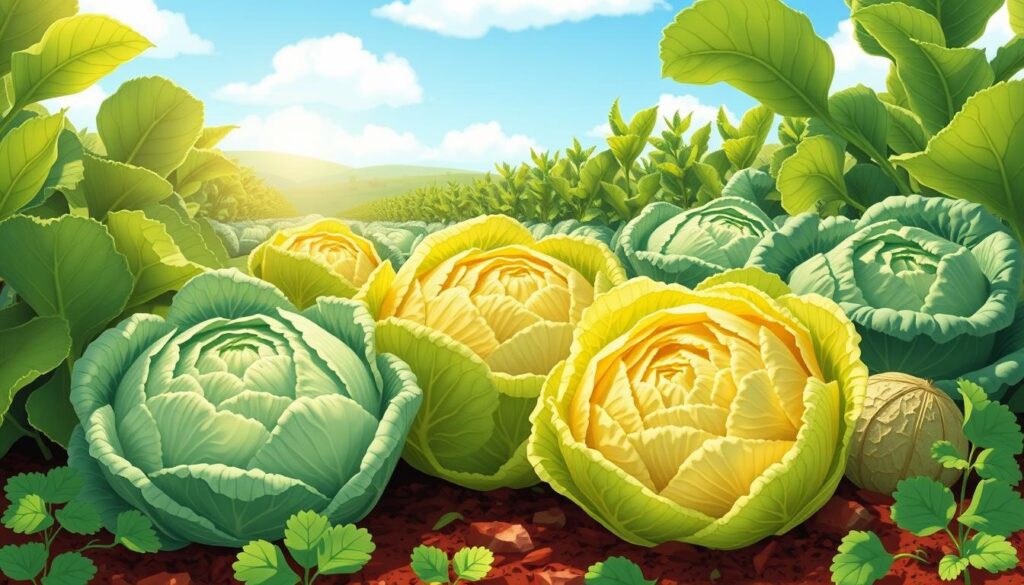
Timing Your Cabbage Planting
Planning when to plant cabbage is key for a great harvest. Understanding the growing season is crucial. A planting calendar can boost the quality and yield of your cabbage.
Understanding Planting Seasons
For the best growth, plant cabbage in early spring or early summer. These times are perfect for growing this nutrient-rich vegetable. Spring planting gives a summer harvest, and summer planting leads to a fall crop. Your USDA growing zone plays a big role in planning.
Using Planting Calendars for Your Zone
A planting calendar for your area helps find the best time to plant cabbage. In most places, start cabbage seedlings indoors 50 to 60 days before the last frost. After they grow four true leaves, you can move them to larger pots or the garden. Cabbages need a lot of sun, ideally 6 to 8 hours daily.
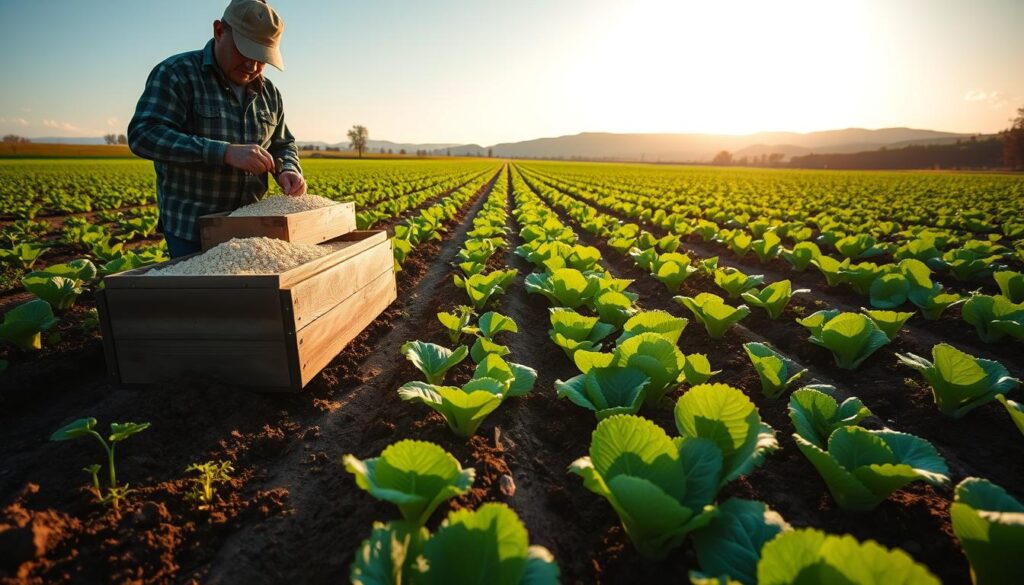
How you space the plants is important too. Space them 15 to 23 inches apart, in rows 24 to 36 inches apart. This spacing helps with airflow. Cabbages need a lot of nutrients during their growth. Adjust your planting calendar with these tips for better cabbage growth.
Growing Cabbage – Farming Tips
Growing cabbage takes careful attention, especially when starting from seed. This leads to a strong harvest. It’s key to know how to look after seedlings and the best time to move them outside. By following these tips, you can boost your cabbage yield and enjoy gardening more.
Starting Cabbage from Seed Indoors
Start your cabbage seeds inside about 4 to 6 weeks before the last frost. This helps them grow well. The soil should be warm, between 75 to 85°F, for the seeds to sprout. Keeping the light just right and the air not too damp will help your seedlings grow strong.
Transplanting Seedlings into the Garden
Once your seedlings are big enough, about 15cm tall or have 5 to 6 real leaves, they’re ready to go outside. Pick a calm day to move them to help them adjust. It’s important to get them used to the outside a week before transplanting.
Make sure there’s enough space when you plant them; 18 to 24 inches apart. This space is needed for healthy growth and good air flow. Keep them watered and fed with a general garden feed to help them grow after moving.
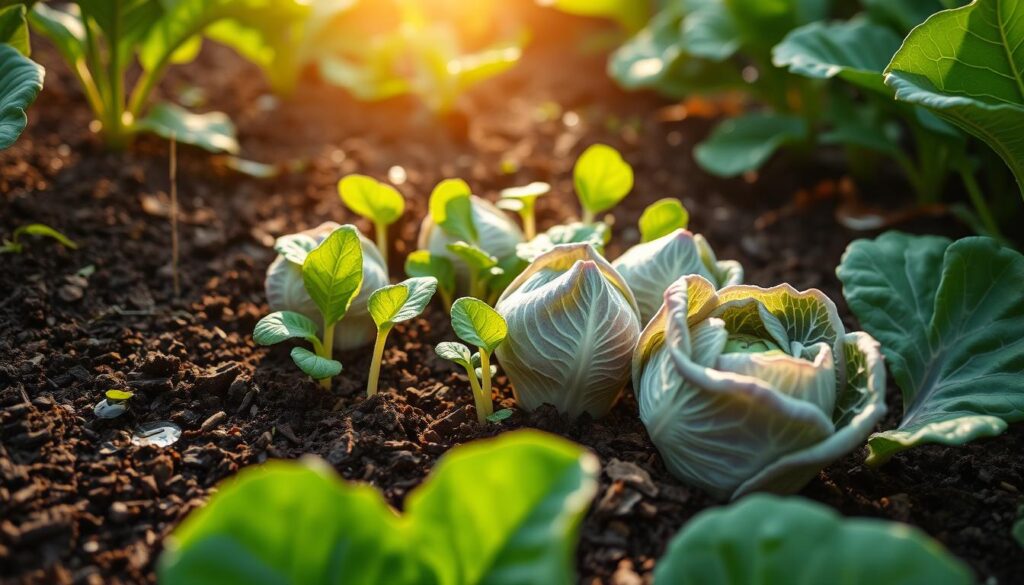
Soil Preparation for Cabbage Farming
Starting with cabbage farming means getting the soil right is key. You need to work on creating healthy soil to see a good harvest. Focus on making the soil firm, as cabbages grow better this way. Use the right fertilizers to feed the soil.
Improving Soil Quality for Better Yields
For the best cabbage crops, begin with checking your soil. Test for pH levels and nutrients to know what your soil needs. Add compost to improve fertility and drainage. This step is important for keeping the soil moist and nutrient-rich.
How you space your cabbage plants matters too. Space small or dwarf types 45 to 60 cm (18 to 24 inches) apart. Larger varieties should be spaced about 90 to 120 cm (3 to 4 feet) apart. Proper spacing helps plants grow healthy and strong.
Recommended Fertilizers for Cabbage Plants
Picking the right fertilizers is crucial for your cabbages. Start with organic, slow-release fertilizers at planting. Add extra nutrients during the growing season. Cabbages need a lot of food to grow well.
Here’s a quick reference table summarizing the optimal spacing and yield potential:
| Cabbage Size | Spacing (cm) | Plants per Acre | Days to Maturity |
|---|---|---|---|
| Small | 45 x 45 | 16,000 | 70-100 |
| Medium | 45 x 60 | 13,000 | 70-100 |
| Large | 60 x 60 | 10,000 | 70-100 |
Don’t forget about water. Building soil walls around plants helps keep moisture in. This encourages deep, strong roots. Follow these steps for healthier cabbages and a great harvest.
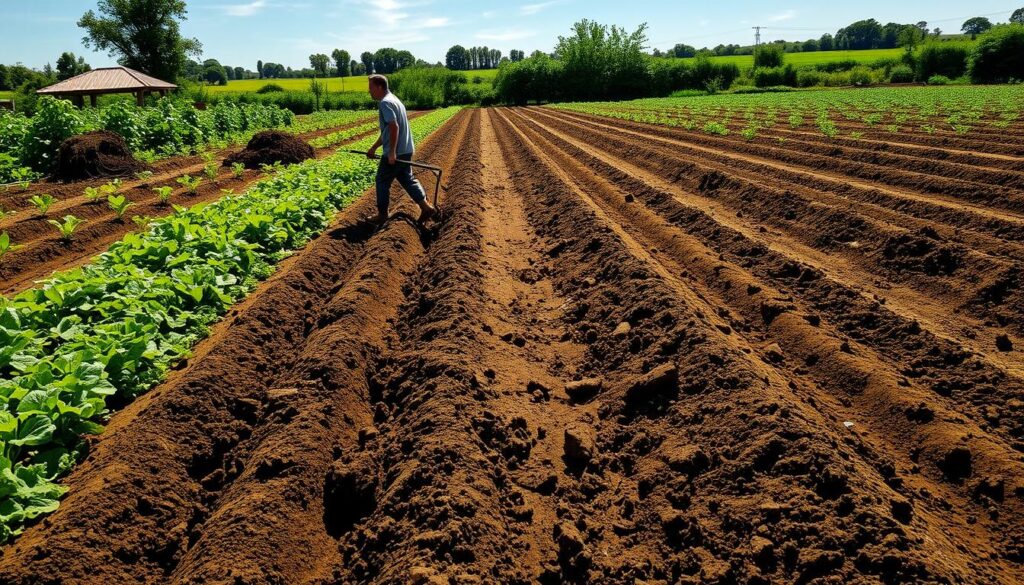
Watering and Moisture Management
Managing moisture well is key for gold-star cabbage farming. The right watering habits boost plant health and how much cabbage you get. Keeping the soil just moist enough helps your cabbages grow strong roots and big, healthy heads. To do great here, knowing exactly how much water cabbages need and how to keep the soil perfect is super important. It helps you steer clear of troubles like root rot. Let’s dive into some major tips for managing moisture in your cabbage patch.
Importance of Consistent Moisture
Cabbages do their best when the soil is nicely moist. You should aim for about one inch of water, from rain or your hose, every week. This helps the plants take in nutrients well and grow strong. Sandy soil dries out quick, so it might need more water to reach ten inches deep. But, heavy clay soil keeps water longer, only needing six inches deep watering. Keeping an eye on this will ensure your cabbages get just what they need.
Avoiding Overwatering and Root Rot
Too much water is a big no-no because it can cause root rot. This is a problem you want to avoid. Using mulch helps hold in moisture but stops the soil from getting too wet around the roots. Mulching with clean grass clippings also keeps weeds down. This means you won’t have to dig around the plants too much. Always watch how wet the soil is and adjust your watering to keep it just right and fight root rot.
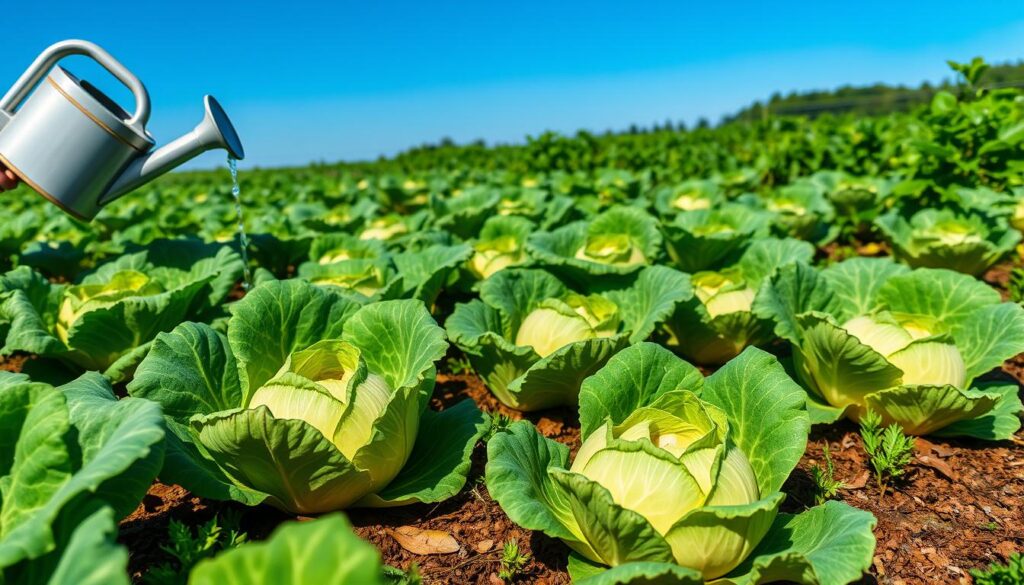
| Soil Type | Watering Needs | Moisture Depth |
|---|---|---|
| Sandy Soil | More frequent watering | 10 inches |
| Heavy Clay Soil | Less frequent watering | 6 inches |
Keeping your watering and moisture game on point supports healthy cabbage growth. It’s also key in avoiding root rot. With these steps, you’re on your way to a bumper crop of cabbages.
Pest and Disease Control
To keep cabbage crops healthy, one must know the pests and diseases they face. Knowing how to control pests and manage diseases is key. This ensures strong plants and a lot of produce.
Common Cabbage Pests and Their Control
Cabbages may suffer from earwigs, cutworms, and cabbage moths. To protect your crops, try these methods:
- Floating row covers keep moths from laying eggs on your crops.
- Sunflowers can stop cutworms. They prefer sunflowers over cabbages.
- Use diatomaceous earth to keep earwigs away from your cabbages.
- Apply Tree Tanglefoot on wood strips to trap earwigs moving towards your crops.
- For severe pest issues, carbaryl, permethrin, or esvenfalerate can be effective.
- Thuricide with Bt specifically targets cabbage moth larvae.
Preventing and Managing Cabbage Diseases
Clubroot and fungal infections can damage cabbages if not handled quickly. To guard against these, follow these steps:
- Don’t plant cabbages where diseases were present before. This can help avoid future problems.
- Grow resistant varieties. Make sure the soil pH is between 6.0 and 6.5.
- To stop clubroot, lime the soil to make it more alkaline and use raised beds.
- Clubroot cysts can stay in soil for nine years. Prevention is crucial.
- Check plants often for issues. Use water to remove whiteflies and prevent mold and diseases.
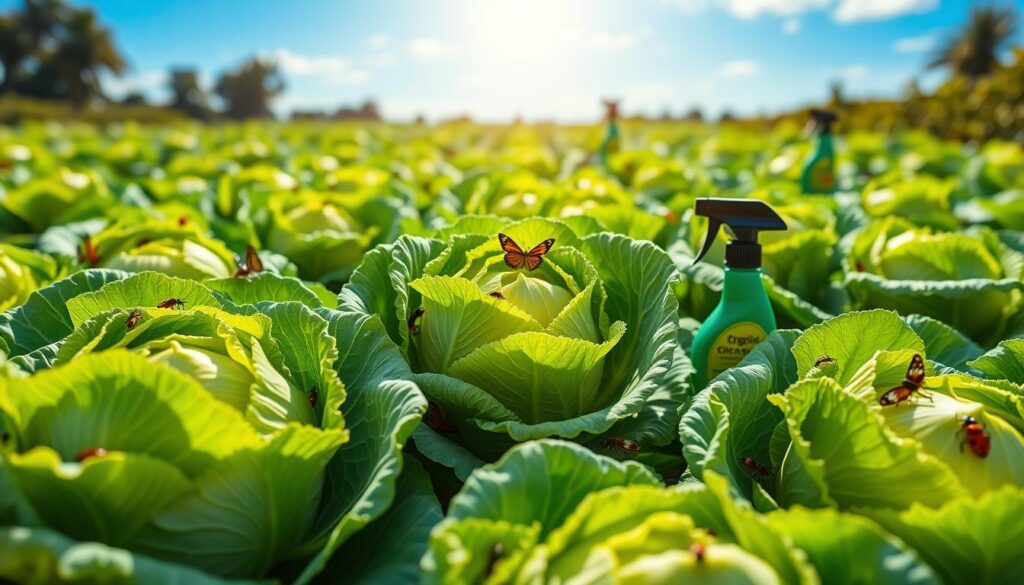
Harvesting Your Cabbage Crop
Getting your cabbage harvest right is crucial for a great yield. The best harvest time captures the peak flavor and texture. Look for signs that your cabbage is ready, to get the most out of your efforts. These tips will guide you to achieve excellent harvesting results.
Signs That Cabbage is Ready to Harvest
Ready cabbage heads feel firm and dense when squeezed gently. They reach harvest time when mature, which differs by variety. For example, ‘Parcel,’ ‘Gonzales,’ and ‘Savoy Express’ mature in about 50 to 55 days. Others take longer but offer rich flavor. Keep an eye on your cabbage as the harvest date nears to ensure you pick them at the perfect time.
Techniques for Proper Harvesting
Proper techniques can boost the quality of your cabbage yield. Here’s how to do it right:
- Use a sharp knife to cut the base of the head, minimizing plant damage.
- Leaving roots may lead to a second harvest, if conditions allow.
- Remove any damaged or spoiling outer leaves before storage.
How you handle cabbage after picking is key. Keep uncut cabbage in the fridge, in a damp towel and a zip-top bag. This keeps it fresh. Temperature control is critical for keeping your cabbage in top condition.
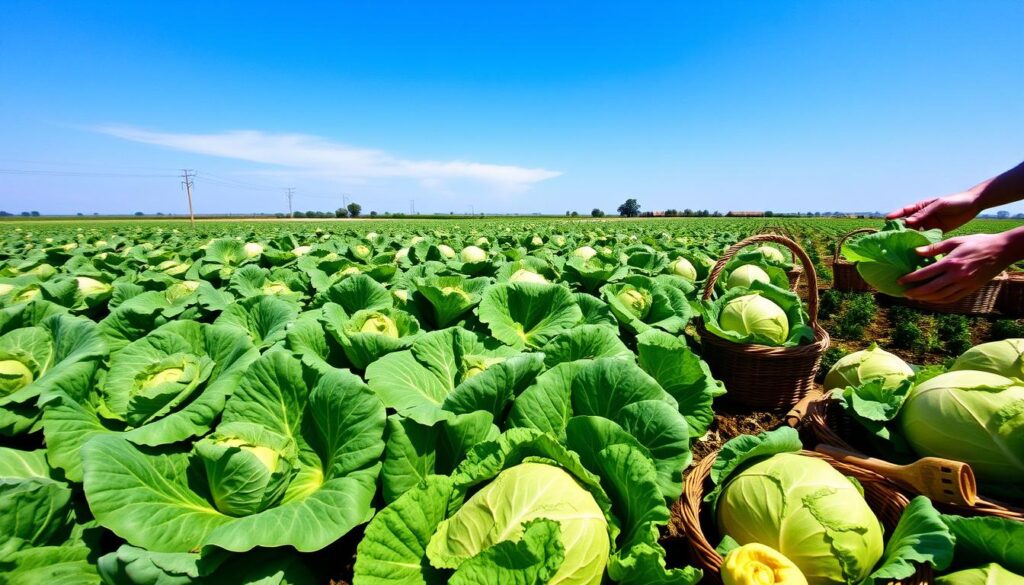
Post-Harvest Handling of Cabbage
After you pick your cabbage, it’s key to handle it right. This ensures it keeps its freshness and taste. Storing cabbage the right way helps save its quality for weeks. By canning or fermenting, you can add more life to your cabbage. This also brings new flavors to your meals.
Storage Tips for Fresh Cabbage
Temperature and moisture are critical for storing cabbage. It’s best kept at 32 degrees F. (0 C.) to 40 degrees F. (4 C.). Also, maintain a humidity level of about 95 percent. These conditions keep its crunch and health benefits.
Your fridge can keep cabbage fresh for two or three months. If you have a root cellar, it might last six months. Varieties like Super Red 80, Late Flat Dutch, and Brunswick are great for long storage.
Preservation Methods: Canning and Fermenting
Canning and fermenting are great for keeping cabbage longer. Canning involves pickling with vinegar and spices. This adds a zesty flavor to your dishes. Fermenting turns cabbage into sauerkraut, which is delicious and full of good bacteria. Both methods increase shelf life and add yummy tastes for all seasons.
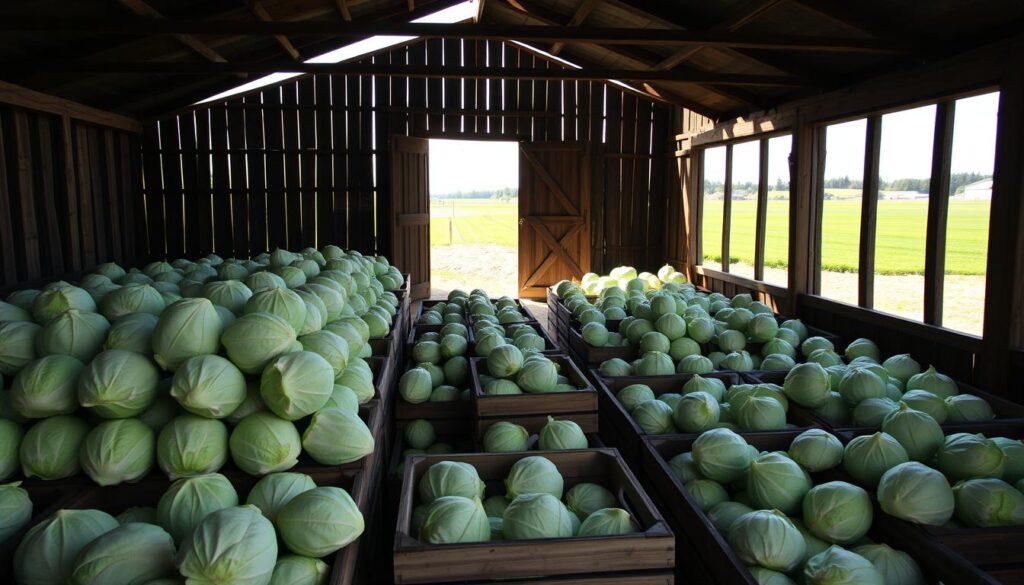
| Preservation Method | Advantages | Flavor Profile | Shelf Life |
|---|---|---|---|
| Canning | Long-term storage, easy to use | Sweet, tangy | 1-2 years |
| Fermenting | Probiotic benefits, unique texture | Salty, tangy | 6 months to 1 year |
By smart storage and preservation, you can enjoy cabbage’s taste and health perks well beyond harvest.
Innovative Techniques for Better Cabbage Farming
Using new methods can greatly improve your cabbage farm’s success. Techniques like crop rotation and planting companion crops can help a lot. These strategies increase your crops’ productivity and make your soil and plants healthier.
The Role of Crop Rotation
Crop rotation keeps the soil fertile and helps control pests. By planting different families of plants each season, you avoid using up soil nutrients and lower disease risks. This way, soil gets to restore its nutrients, making your plants healthier and boosting cabbage growth.
Using Companion Planting to Enhance Growth
Companion planting means growing certain plants near your cabbages to help them thrive. Some plants can help your cabbages get more nutrients or keep pests away. For example, some herbs and flowers attract useful insects that protect cabbages from pests. Choosing the right plant friends can increase your cabbage yield and make your garden a balanced ecosystem.
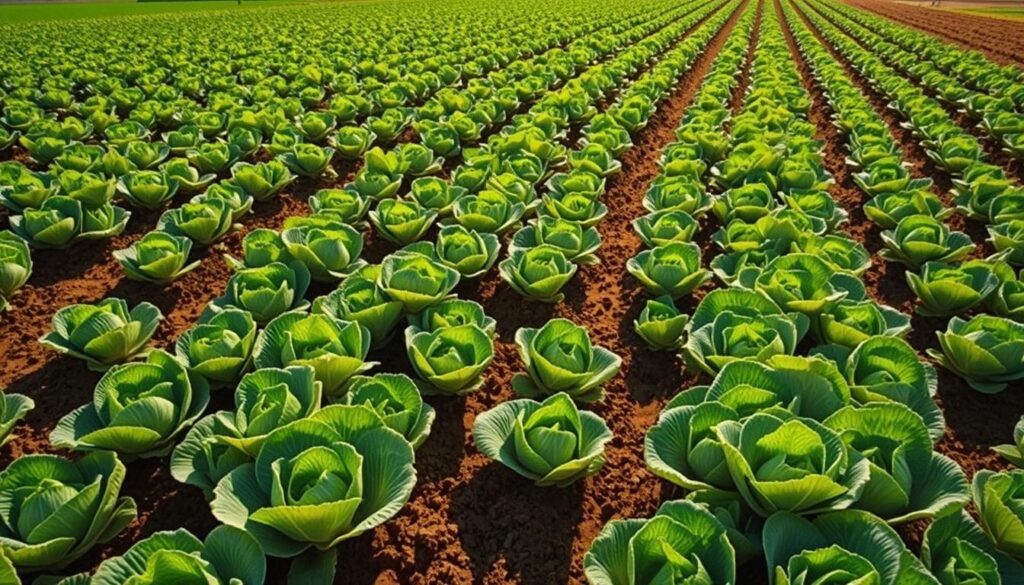
Conclusion
Embrace the practices we talked about to get the best out of cabbage farming. Knowing the right conditions for growth is key. This includes the climate and soil cabbages love.
Get better results by planting correctly, managing pests well, and harvesting efficiently. Cabbage doesn’t ask for much, but it needs your regular care. This means watering it right, spacing it properly, and keeping diseases away.
Cabbage farming is also a smart business move. It offers food and profit. With dedication and the right info, raising cabbages can be fulfilling. Try different cabbage types and use new tips to improve your crop.
Start your garden with confidence. Watch your cabbages grow well!

